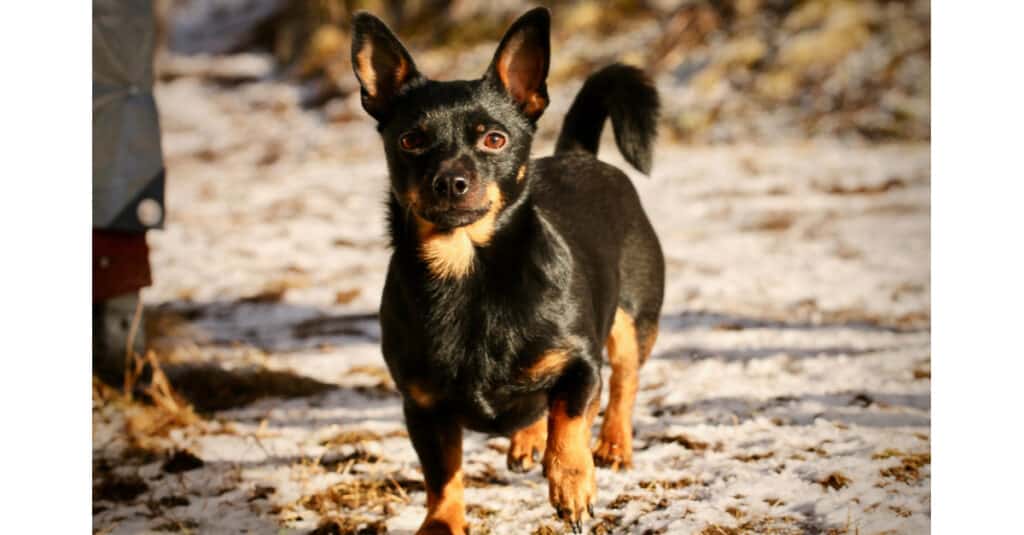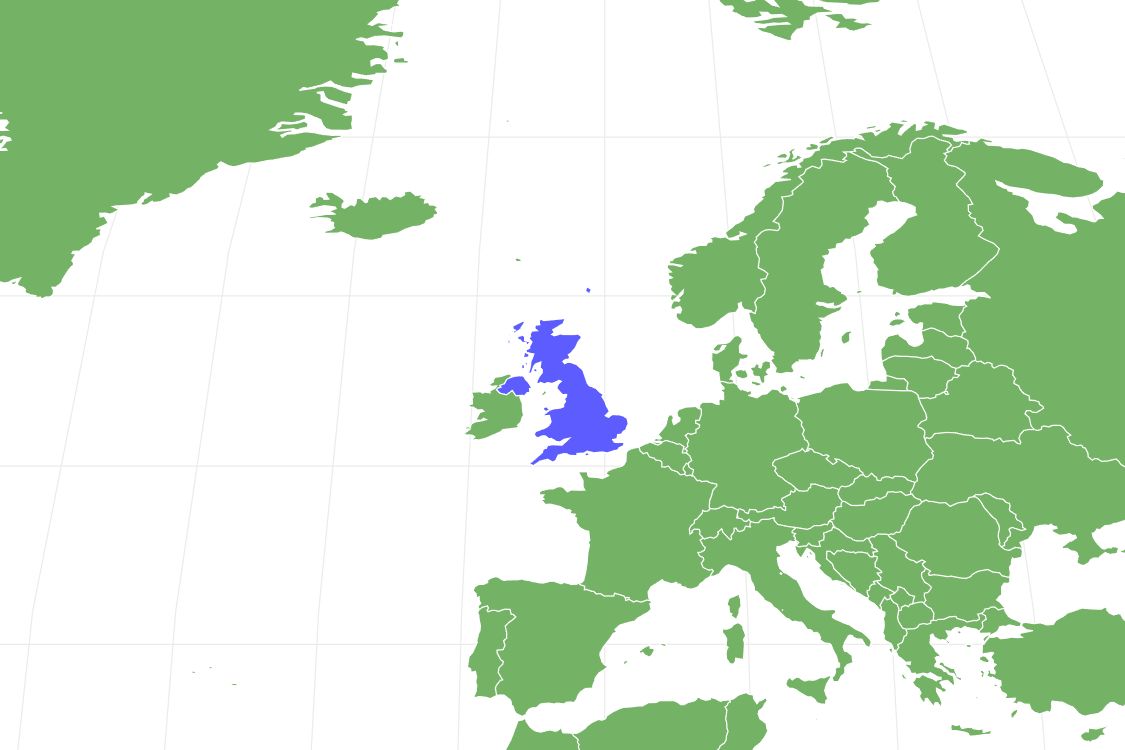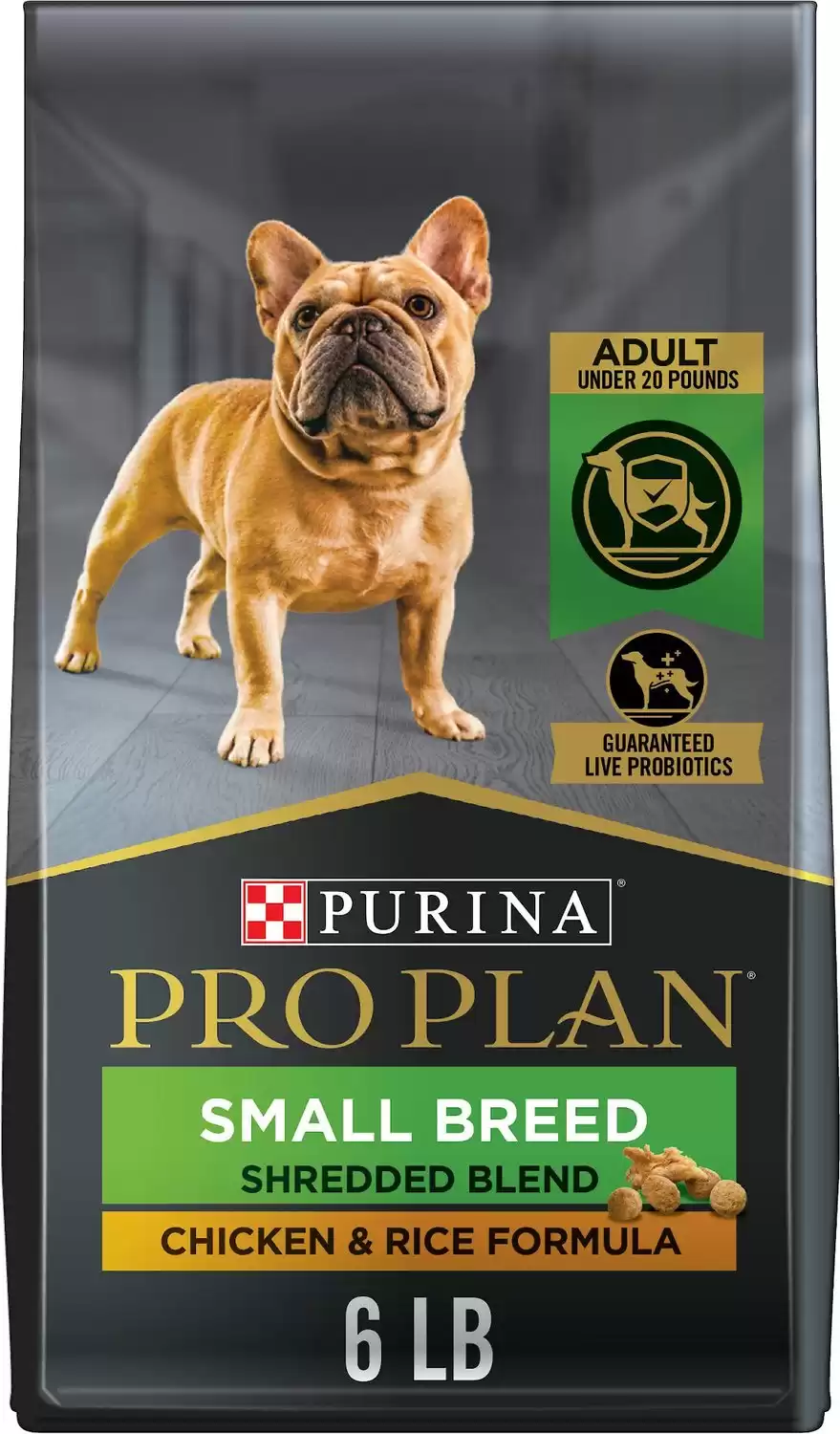Lancashire Heeler
Canis lupus
The name “heeler” comes from the fact that it nips at the heels of cattle to herd them.
Advertisement
Lancashire Heeler Scientific Classification
- Kingdom
- Animalia
- Phylum
- Chordata
- Class
- Mammalia
- Order
- Carnivora
- Family
- Canidae
- Genus
- Canis
- Scientific Name
- Canis lupus
Read our Complete Guide to Classification of Animals.
Lancashire Heeler Conservation Status
Lancashire Heeler Facts
- Fun Fact
- The name “heeler” comes from the fact that it nips at the heels of cattle to herd them.
- Most Distinctive Feature
- The "Heeler smile."
- Temperament
- Intelligent, adaptable, and affectionate.
Lancashire Heeler as a Pet:
- General Health
- Energy Level
- Shedability
- Trainability
- Intelligence
- Tendency to Chew
- Size
- Family and kid friendliness
- Yappiness / Barking
- High
- Separation Anxiety
- High
- Preferred Temperature
- Average climate
- Exercise Needs
- High
- Friendly With Other Dogs
- High
- Pure bred cost to own
- $800 to $1,200 on average.
- Dog group
- Herding
- Male weight
- - lbs
- Female weight
- - lbs
This post may contain affiliate links to our partners like Chewy, Amazon, and others. Purchasing through these helps us further the A-Z Animals mission to educate about the world's species.
View all of the Lancashire Heeler images!
When happy and content, the Lancashire Heeler shows off a big grin, nicknamed the Heeler Smile.
The Lancashire Heeler (also known as the Ormskirk Terrier) is a small, affectionate dog, hailing from the northern England county after which it’s named. The exact history is unknown, but the Lancashire Heeler probably originated at some point in the 17th century, perhaps as the result of a cross between the Pembroke Welsh Corgi and the Manchester Terrier. This breed was an all-purpose farm dog, used for both livestock herding and ratting. It is characterized by a long but sturdy body, short legs, big triangle-shaped ears, and a short double coat, slightly longer around the neck. Black and tan are the most common colors, but liver and tan are accepted as well.
See all of our expert product reviews.
This breed is considered to be vulnerable in the United Kingdom. There are only around 5,000 registered members left around the world, putting them at high risk of inherited diseases.
3 pros and cons of owning a Lancashire Heeler
| Pros! | Cons! |
|---|---|
| Friendly and Affectionate: The Lancashire Heeler is a great companion dog. | Needs Constant Mental Stimulation:This breed does not like to be left alone without anything to do for long periods of time. |
| Hard-working and Intelligent:It is very intelligent on account of its origins as a herding dog. | Health Problems:The Lancashire Heeler is particularly prone to eye disorders. |
| Adaptable:This breed can quickly adapt to a lot of different living situations and daily routines. | High Exercise Needs:Owners should prepare to spend a lot of time on physical activity. |

©LNbjors/Shutterstock.com
Lancashire Heeler Size and Weight
The Lancashire Heeler is a small dog, its legs deliberately shortened, perhaps as a result of some Corgi heritage.
| Height (Male): | 10 to 12 inches |
| Height (Female): | 8 to 10 inches |
| Weight (Male): | 9 to 17 pounds |
| Weight (Female): | 9 to 17 pounds |
Lancashire Heeler Common Health Issues
The Lancashire Heeler has an excellent lifespan of around 12 to 15 years, but it does tend to suffer from several developments and eye disorders, exacerbated by its shrinking genetic pool. Some of the most common problems include cataracts, disc diseases, and cancer.
There are also several more rare diseases that you should look out for. Persistent pupillary membrane, which occurs in fetal development, is the result of a blood-rich membrane persisting near the front of the lens instead of receding back into the eye, as it should during development; this membrane is visible from the outside and obscures the vision. Lens luxation occurs when the ligaments in the eye begin to weaken, displacing the lens. Choroidal Hypoplasia is a developmental problem in which the blood-rich portion of the eye fails to grow properly; severe cases can result in loss of vision. Finally, patellar luxation is caused by the kneecap regularly becoming dislocated from the joint; some of the symptoms include pain, stiffness, and lameness.
Health and Entertainment for your Lancashire Heeler
See all of our expert product reviews.
Good breeders will always try to minimize the chances of genetic problems arising by testing their dogs for common health conditions. They should be able to provide proof of a negative test when asked.
In summation, these are the most common problems associated with the Lancashire Heeler:
- Cataracts and other eye disorders
- Cancer
- Patellar luxation
- Disc diseases
Lancashire Heeler Temperament
The Lancashire Heeler has a very pleasant personality. It is playful, affectionate, cheerful, and fairly open to strangers. It thrives on companionship and will follow its owner everywhere. You should be aware, however, that this breed does require plenty of mental stimulation and social interaction throughout the day. If it grows bored, then it will resort to destructive behavior. So whenever you need to leave this dog alone for several hours during the day, make sure it has enough activities to do, or else you might come home to a mess.
How to Take Care of the Lancashire Heeler
The Lancashire Heeler is a great choice for both first-time and experienced owners. They do require quite a bit of exercise and early training, but if you’re willing to devote the time and effort, then this breed can yield some great results. They are also fairly good apartment dogs, provided you have enough outdoor space nearby for exercise and playtime.
The Best Dog Food for Lancashire Heelers
The Lancashire Heeler needs around a cup of high-quality dog food every day, though the exact amount will likely vary with the dog’s age, size, and activity level. Since obesity can be a slight problem, you should limit the number of snacks and provide plenty of exercise throughout the day.
At A-Z Animals, we favor Purina Pro Plan Small Breed & Toy Breed Formula Adult Dry Dog Food as the best dog food for Lancashire Heelers.
In a chicken recipe for the littlest canines, this food has calcium and phosphorus which contribute to bone and cartilage stability. Additionally, taurine lends itself to both a healthy heart and eyes, and natural glucosamine from poultry aids in the mobility and longevity of the joints. Probiotics harness a functioning digestive system into optimal immunity.
You can get Purina Pro Plan Small and Toy Breed dog food on Chewy and Amazon.
- Nutrient-dense bite-sized kibble and small tender, shredded pieces for a taste and texture dogs love.
- High protein formula with real chicken as the first ingredient.
- Fortified with guaranteed live probiotics to support digestive and immune health.
- Used to be known as SAVOR Shredded Blend Chicken and Rice Formula.
- Formulated high in protein to meet the needs of highly active small dogs.
Maintenance and Grooming
Despite the thick double coat and the tendency to shed, the Lancashire Heeler is an easy dog to groom. Regular brushings a few times a month with a firm bristle brush should be sufficient to keep the coat healthy and clean. Bathing should be done only when necessary, perhaps a few times a year, because the coat is pretty good at taking care of itself.
The Lancashire Heeler will also require regular nail trimmings around once a month. If the nails start clicking loudly on the floor, then they need to be clipped immediately. Check the ears regularly to prevent infections, and if necessary, clean them out with a cotton swab. Finally, brush their teeth frequently with a kind of appropriate vet-approved toothpaste.
Training
The Lancashire Heeler has an intelligent and eager mind often seen in a breed of this kind. While it can be a little independent-minded, this breed also loves to learn new things and spend quality time with its owner. One thing to keep in mind is that you will need to exercise patience and understanding to avoid alienating your dog. The last thing you want it to do is to shut down and ignore you because you were overly harsh toward it.
You should also keep your commands consistent yet simple to establish clear boundaries and rules. But provided you remain positive and upbeat, this dog has an amazing ability to learn new commands and tricks.
Exercise
The Lancashire Heeler needs about an hour of exercise every day. It enjoys long walks, fetching, playtime, and even agility and herding challenges, but it probably won’t do as well with faster exercise due to its shorter legs.
Lancashire Heeler Puppies
Despite their naturally playful and affectionate temperament, Lancashire Heeler puppies will need to be properly trained and socialized as early as possible. Parks, meet-ups, and daycare are all good options for introducing your dog to new situations. These puppies are fairly easy to housetrain, but a crate can help in this regard because dogs do not want to soil their sleeping areas. More advanced commands should ideally begin around the four to six-month mark after you develop a strong bond with your dog.
Unless you plan to breed your dog, it is a good idea to have them spayed or neutered by the first year of age. This confers numerous health and behavioral benefits.
The Lancashire Heeler and Children
With its affectionate and spirited personality, the Lancashire Heeler should endear itself to children of all ages. Nevertheless, this dog does tend to nip a bit and bark loudly, which might disturb some younger kids. Adults should always supervise all interactions until the children are old enough to learn the responsibility of caring for a dog on their own.
Dogs Similar to the Lancashire Heeler
The Lancashire Heeler bears a strong similarity to several other breeds of herding dogs that originated from the United Kingdom.
- Pembroke Welsh Corgi: Playful, intelligent, and affable, the Corgi is a herding dog that originated not very far from Lancashire in Wales. It has the same long body and short legs as the Lancashire Heeler. Their natural intelligence and friendliness make them a favorite breed of Queen Elizabeth II and millions of other people around the world.
- Manchester Terrier: Because of their close history together, a comparison between the Lancashire and Manchester Terrier will reveal obvious similarities. Both dogs are intelligent, spirited, and affectionate. And while the Manchester stands a lot taller, their coat color and head shape are similar as well.
- Border Collie: This is an athletic, smart, and affectionate herding dog with a medium-length double coat of fur. Black and white is the standard color scheme, but there are many accepted colors, including blue, brindle, red, sable, lilac, and a combination of these.
Famous Lancashire Heeler Dogs
Unlike the more popular Corgi, the Lancashire Heeler is still a fairly obscure breed. It’s becoming increasingly rarer in the United Kingdom and may be very difficult to find in the United States. As a result, there are few famous examples of this breed.
Popular Names for the Lancashire Heeler
If you need some help, here’s a selection of popular dog names for the Lancashire Heeler:
- Addie
- Daisy
- Teddy
- Olive
- Buddy
- Charlie
- Skip
- Lucy
- Murray
- Gracie
Lancashire Heeler FAQs (Frequently Asked Questions)
Are Lancashire Heelers good pets?
That depends on what kind of dog you are looking for. The Lancashire Heeler is an excellent companion and family dog with an excellent lifespan, but some owners may not want to deal with its herding instincts and some of its physical and mental needs.
Do Lancashire Heelers bark a lot?
Yes, the Lancashire Heeler does have a reputation as a big barker, especially when it hears a stranger approaching the home. Their alertness and loud barking actually make them decent watch dogs, but this obviously should not be the primary reason why you buy this breed.
What does a Lancashire Heeler dog look like?
The Lancashire Heeler has a long body, low to the ground on account of its short legs. This is complemented with large triangle-shaped ears, almond-shaped eyes, prominent snout, and a long tail. Black and tan is the most common color combination, but liver and tan is accepted as well. The tan appears as markings around the legs, chest, snout, interior of the ears, and just above the eyes.
How much is a Lancashire Heeler?
The cost of a new Lancashire puppy is normally between $800 and $1,200. If the cost seems a little too high, there is always the option to adopt a dog from a rescue shelter or individual seller. Just keep in mind that this breed might be extremely hard to find in a rescue shelter on account of its rarity. There are also unlikely to be many Lancashire-specific rescue groups in your area.
Where did Lancashire Heelers originate?
The history of the Lancashire Heelers can be traced back to the county of Lancashire in northern England.
What kind of mixed dogs are produced from the Lancashire Heeler?
The Lancashire Heeler is not usually mixed with other breeds on account of its rarity, but it could conceivably produce any number of mixed dogs, including with the closely related Corgi.
Thank you for reading! Have some feedback for us? Contact the AZ Animals editorial team.
Sources
- American Kennel Club, Available here: https://www.akc.org/dog-breeds/lancashire-heeler/
- Wag!, Available here: https://wagwalking.com/breed/lancashire-heeler


















